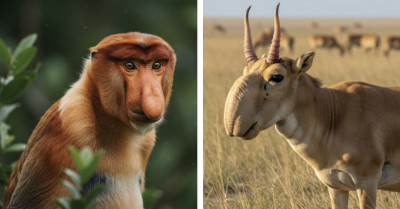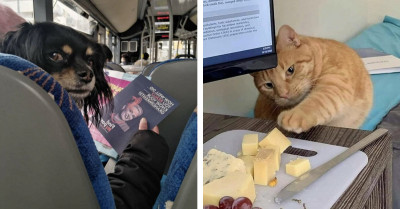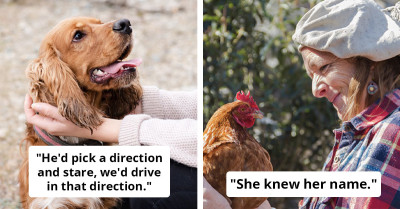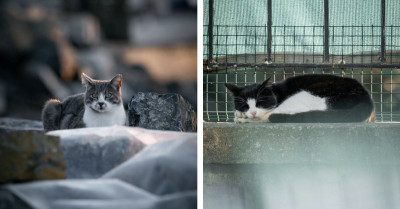50 Photos Of Cute Animals That Can Fit On Your Fingertip
Small animals awaken a protective instinct in us, making us want to pet and cuddle them. However, we can't, as they are so small that we might inadvertently hurt them.
But we can admire their photos and unconsciously repeat, 'Awwwwww.' And who can blame us?
An excellent subreddit with 80,000 members called 'Tiny Animals on Fingers' is dedicated to celebrating these beautiful beings. Some of these animals are just babies and will be slightly larger when they grow up, while others are fully grown animals that can fit on the tip of your finger.
If this diversity of wildlife around us doesn’t make you appreciate nature more, we don’t know what will. Nature is such a wonderful and amazing phenomenon, and we should do whatever we can to protect it.
Keep in mind that some of the animals you are about to see are endangered species that need our help. If we are not careful, these pictures may be all that’s left of them.
"Help Wildlife," a British charity-run advice website, shares tips on how we can protect them: "To avoid disturbing small animals when in nature, it's best to stick to established pathways whenever possible.
If you see a nest or other animal habitat, observe only from a distance; never try to touch or interfere. If you have a dog with you, make sure they are kept under control and are not allowed to disturb or harm wildlife," Sarah from "Help Wildlife" advises.
1. Little Dragon
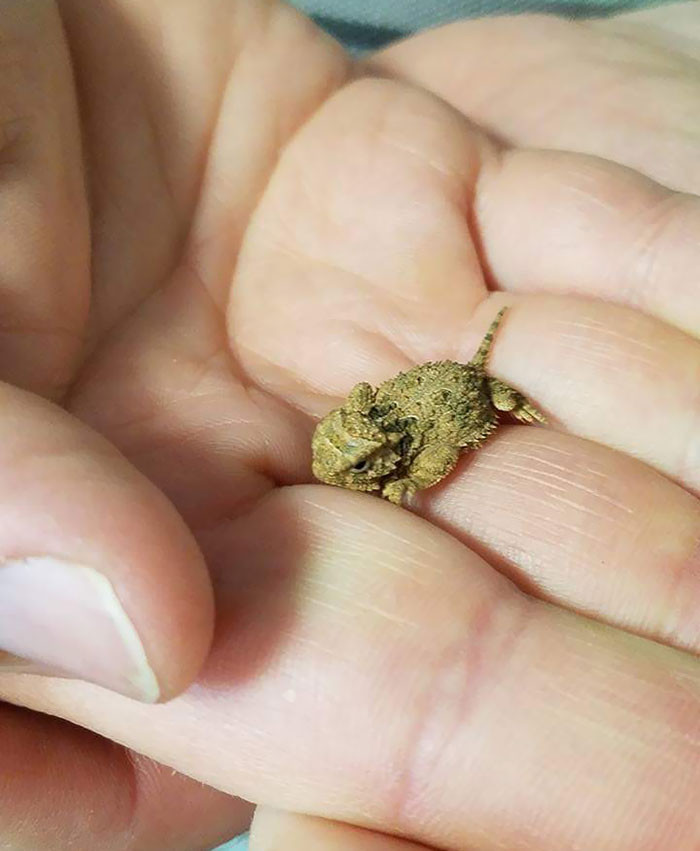
2. Little Ghost
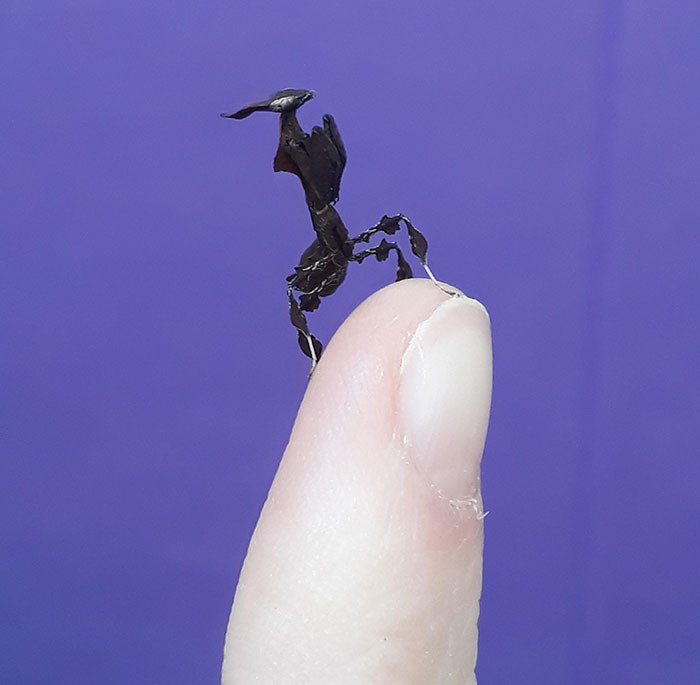
3. "A Tiny Ruby-Throated Hummingbird"
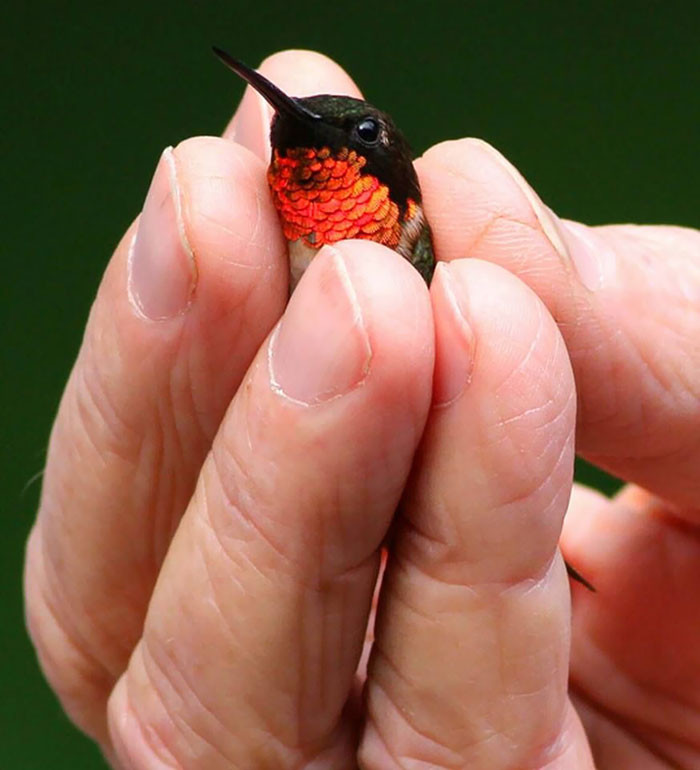
The Psychological Benefits of Pet Ownership
Research consistently shows that pet ownership can lead to improved mental health outcomes. A study published in the Journal of Happiness Studies found that interacting with animals can reduce stress and increase feelings of happiness.
The presence of pets often provides companionship, which is particularly beneficial during challenging times, as they can help alleviate feelings of loneliness and isolation.
4. "Baby Snapping Turtles Look Just Like Little Dinosaurs"
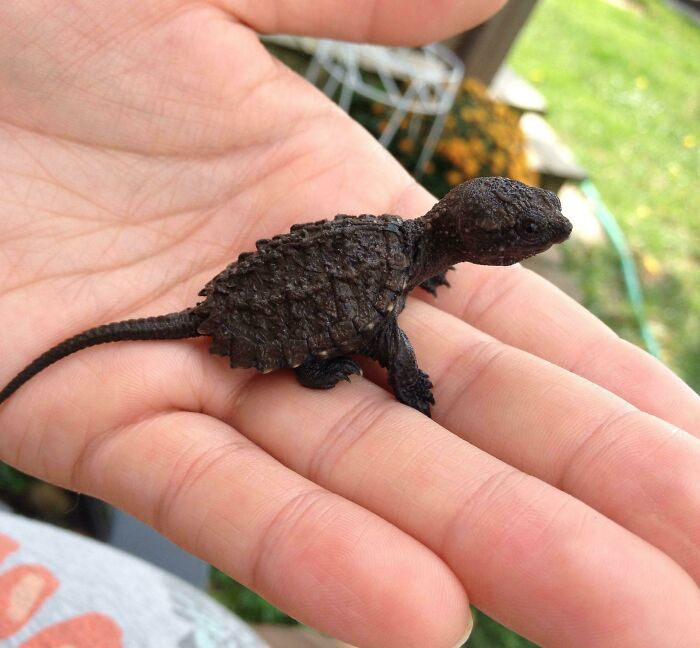
5. "Baby Ashy Gecko Found In The Florida Keys"
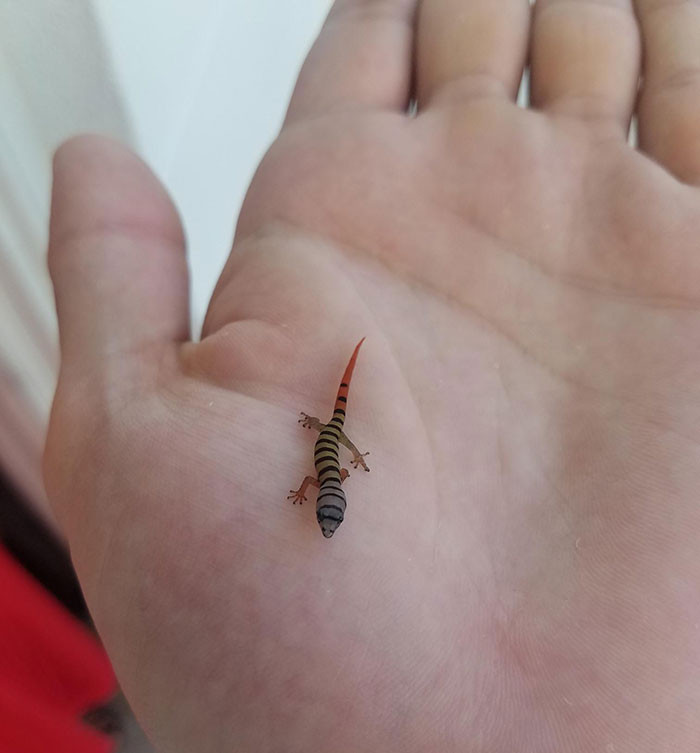
6. "We Give Green Tree Pythons A Big Thumbs Up"
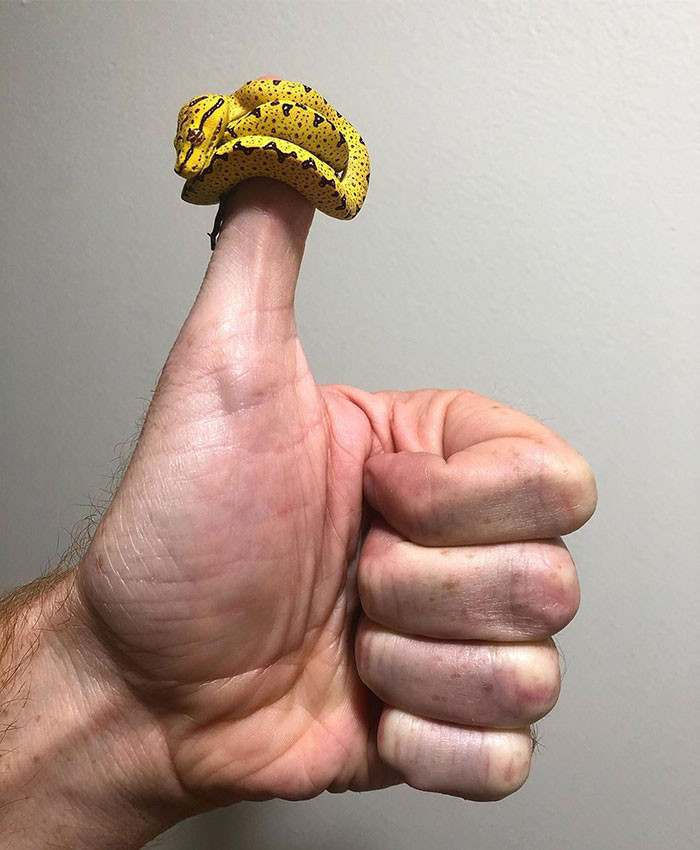
Additionally, pet ownership can foster a sense of responsibility and routine, both of which are important for mental well-being. Studies indicate that the structure provided by caring for a pet can be particularly beneficial for individuals struggling with anxiety or depression.
Engaging in regular activities, such as walking a dog, can also promote physical health, which is closely linked to emotional wellness.
7. "Those Smol Legs"
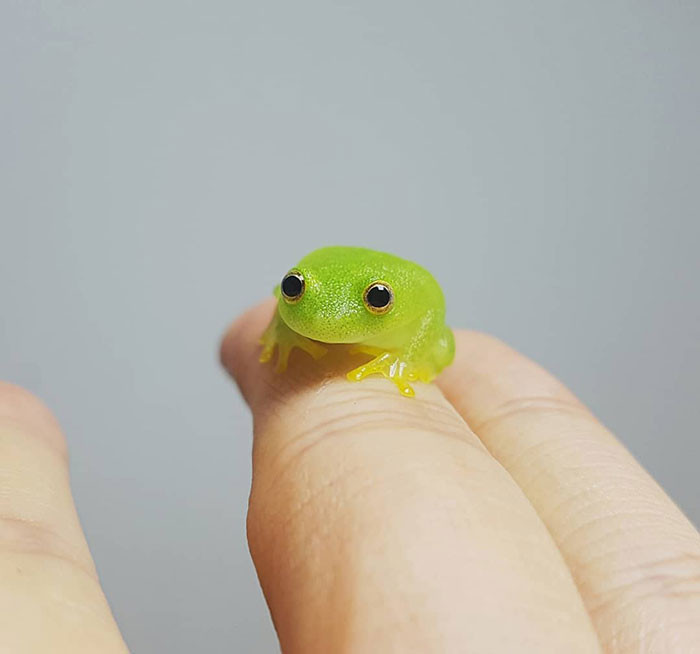
Sarah from "Help Wildlife" states that traffic has "a tremendous impact" on wildlife of all sizes. "In addition to the obvious accidents, roads also divide and reduce their natural territories," she explained. Fortunately, some people are paying attention.
"Some forward-thinking countries are creating wildlife crossings when building new roads, which can be helpful. Otherwise, the best way to prevent loss of life is to drive carefully, especially in areas with abundant wildlife or where there is undergrowth at the side of the road from which animals may dart out. If an animal comes into contact with your car, always stop to check on them and try to find them help," Sarah added.
8. "Say Hello To Bugmeat"
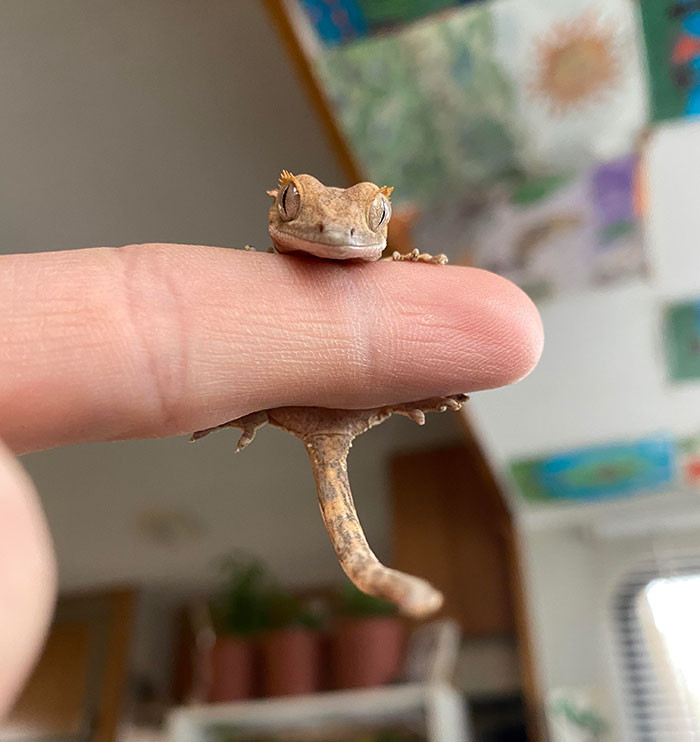
9. "Does This Count?"
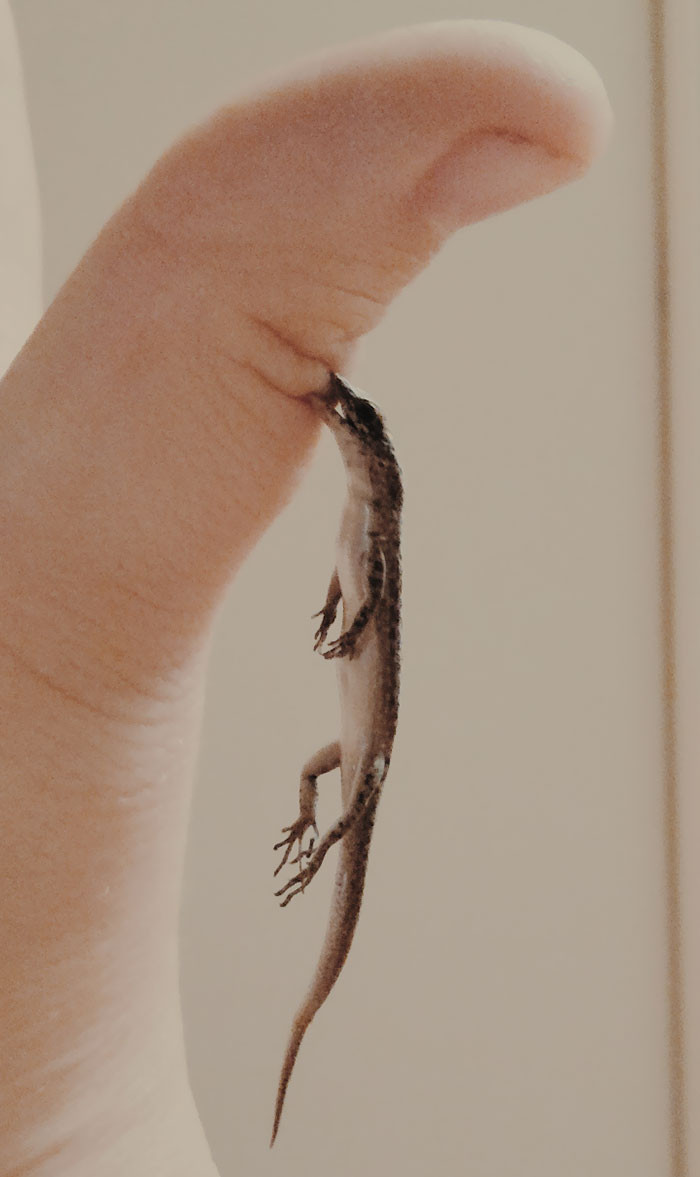
The Cutest Animals: Why We Love Them
Our attraction to cute animals can be explained through psychological and evolutionary perspectives. Research from Oxford University indicates that humans are biologically wired to respond positively to features commonly associated with infant animals, such as large eyes and round faces.
This response likely evolved to promote nurturing behaviors, ensuring the survival of young species. The joy we derive from viewing cute animals can trigger the release of oxytocin, often referred to as the 'love hormone.'
10. Ghost Crab
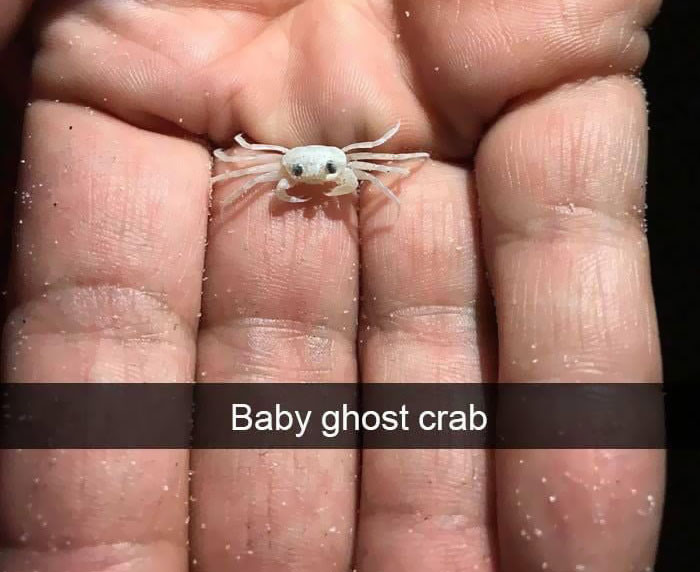
11. "Two Tiny Newborn Feathertail Gliders"
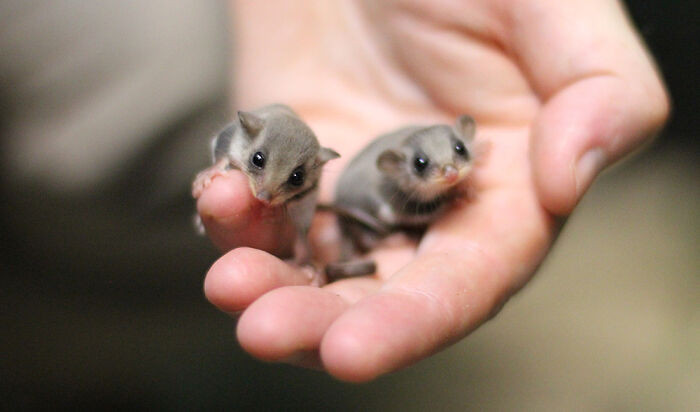
12. "The Tinyness Of This Frog"
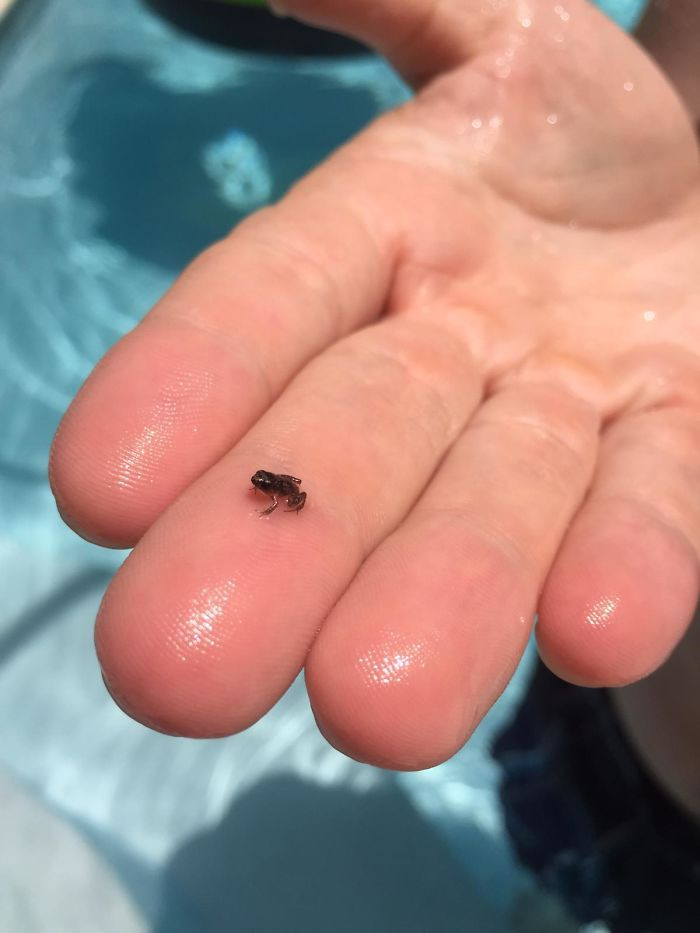
Furthermore, observing cute animals can positively impact our mood and overall mental health. A study published in the Journal of Experimental Psychology found that participants who viewed images of cute animals reported higher levels of happiness and lower levels of stress.
Incorporating exposure to cute animals into our daily routines can serve as a simple yet effective way to enhance our emotional well-being.
13. "Tiny Baby Chameleons"
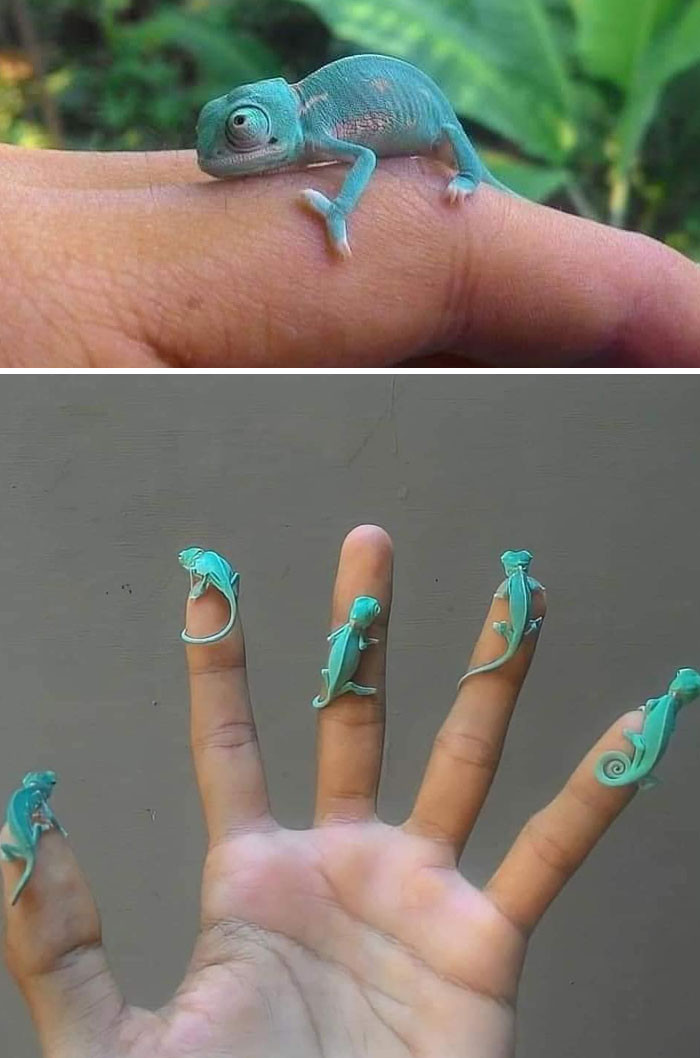
14. "Tiny Sea Slugs"
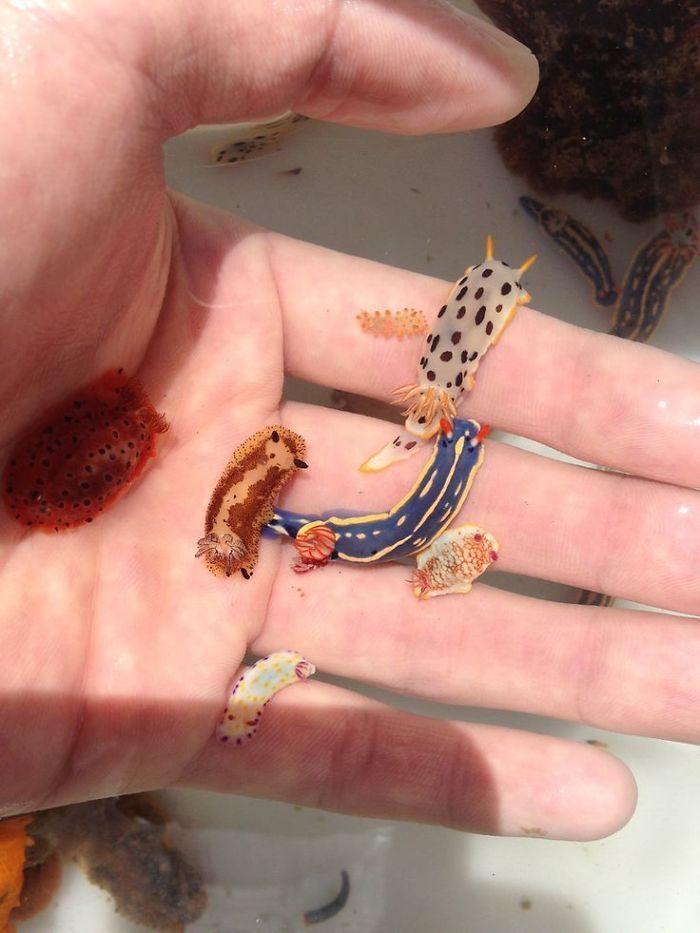
15. "How About A Non-Furry Little Guy? This Dude Hung Out With Me For A While In Hawaii"
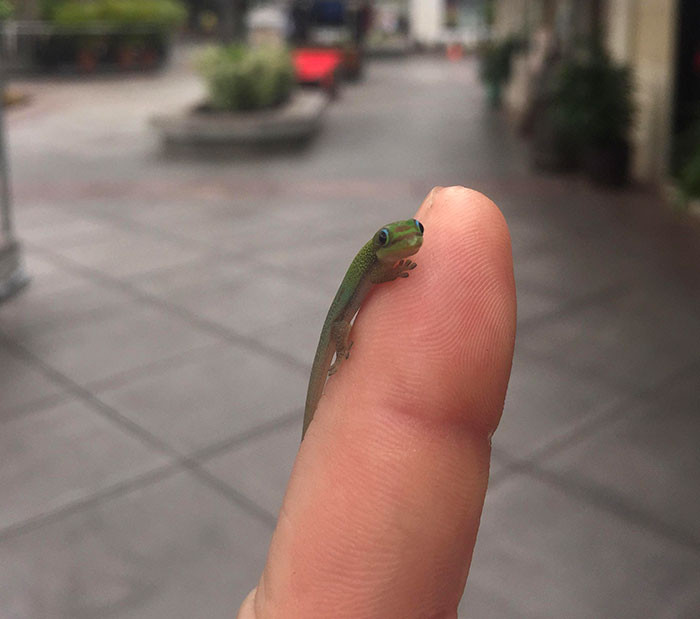
Practical Tips for Animal Lovers
For those looking to enhance their well-being through animals, consider volunteering at local shelters. Research shows that engaging in community service can significantly improve mental health outcomes.
Additionally, spending time with animals, whether through pet ownership or organized activities, can provide emotional support and companionship. Creating a routine that includes animal interaction can also promote a sense of purpose and fulfillment.
16. "The Tiniest Of Geckos"
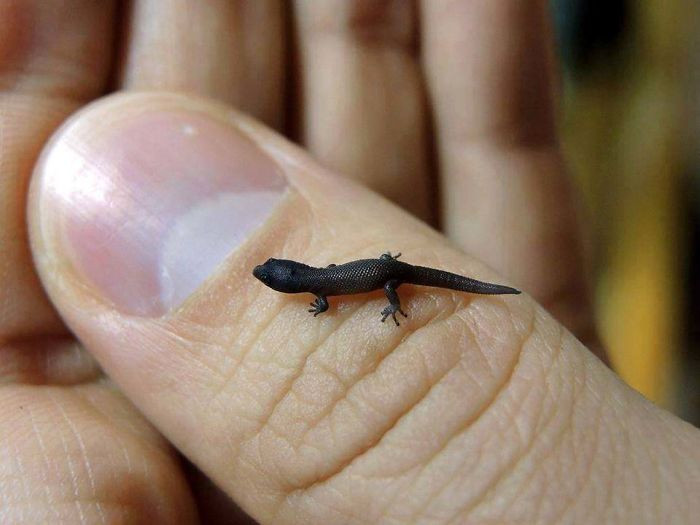
17. "Welcome To The World, Little One"
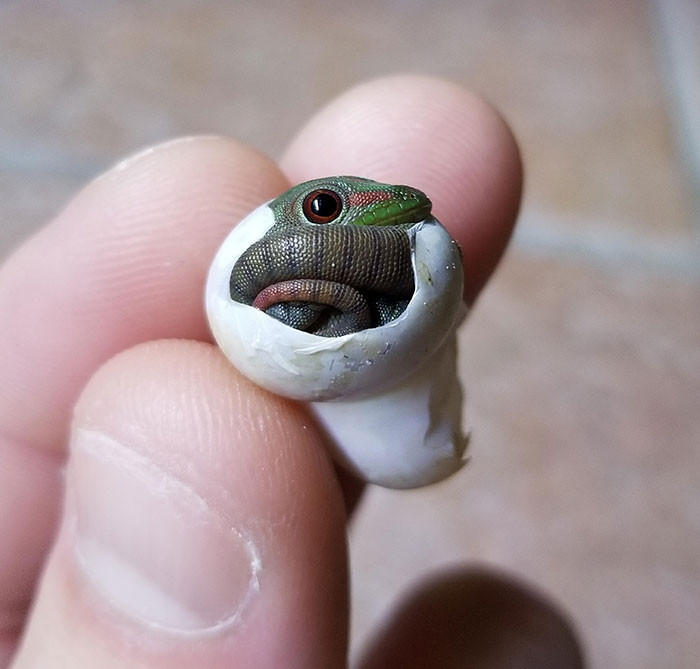
18. "Found Two Baby Bats Rolling On My Deck This Morning. I Had Never Seen A Baby Bat Before; Thought Maybe Others Hadn't Either"
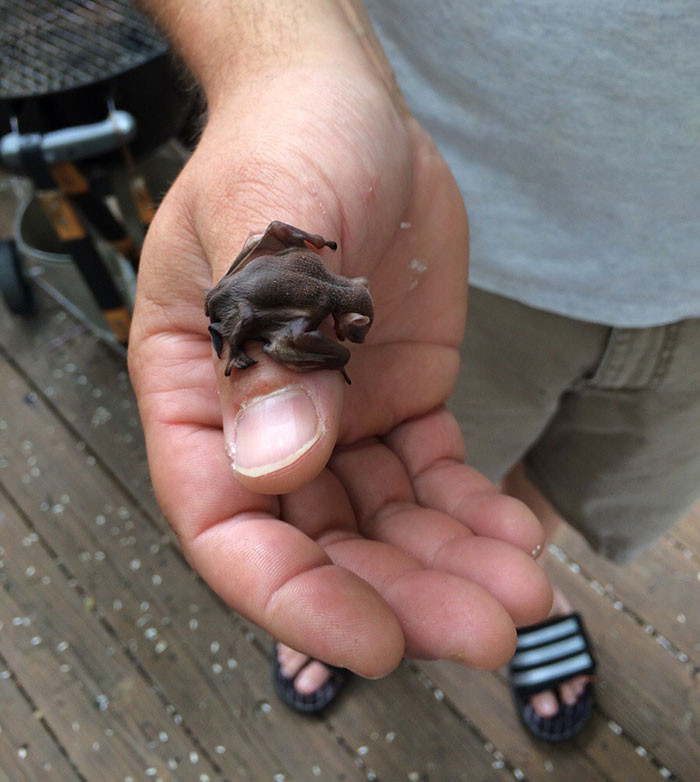
19. "Please Enjoy These 3 Babies"
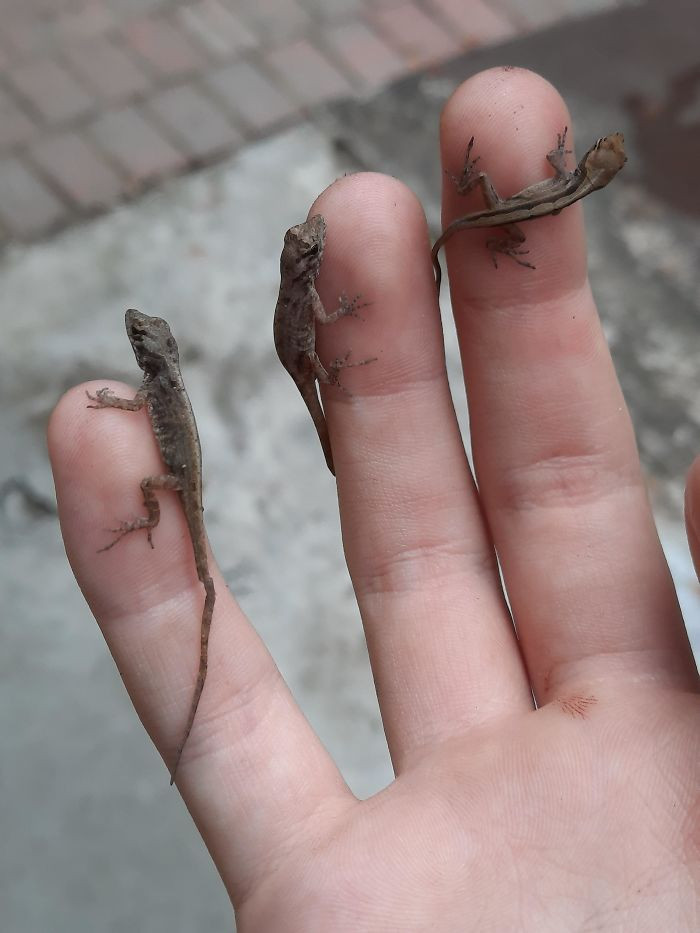
20. Baby Swordfish
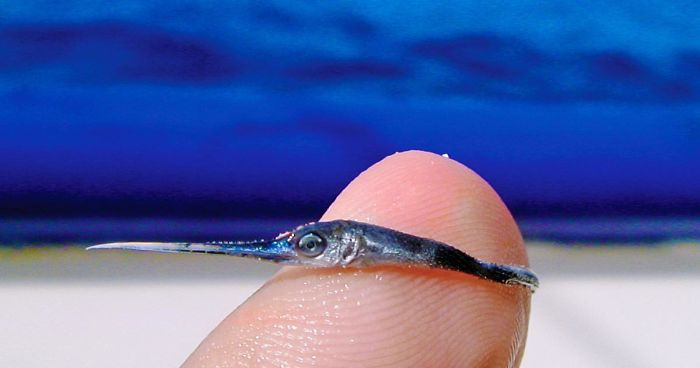
21. "This Is Actually A Flying Fox Species: A Northern Blossom Bat. Pixie Is A Subadult And Weighs 8g"
"Currently raised by our volunteers, she still needs a bit more time before she will start to fly, but she is becoming more active now."
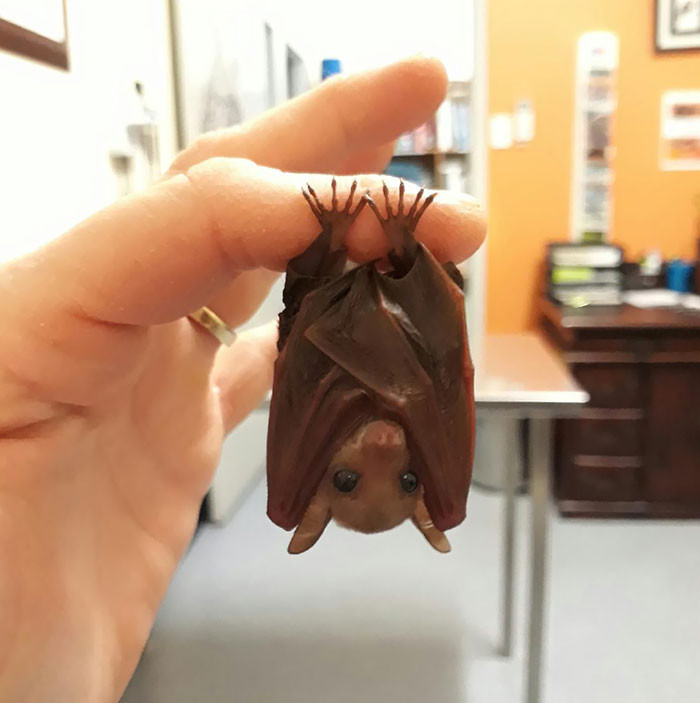
22. "I've Never Seen A Baby Catfish In Here"
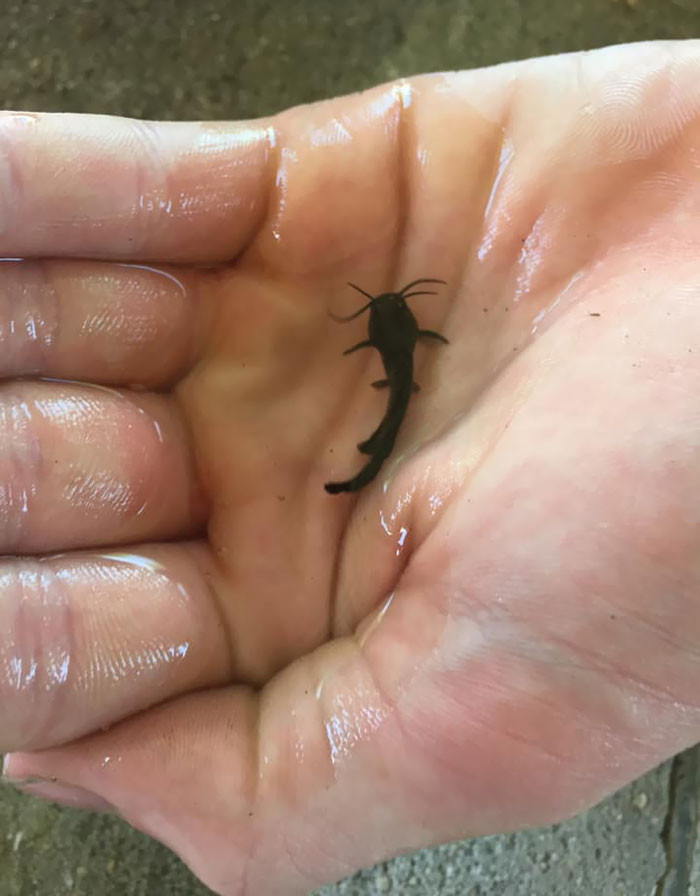
23. "Fuzzy Little Moth"
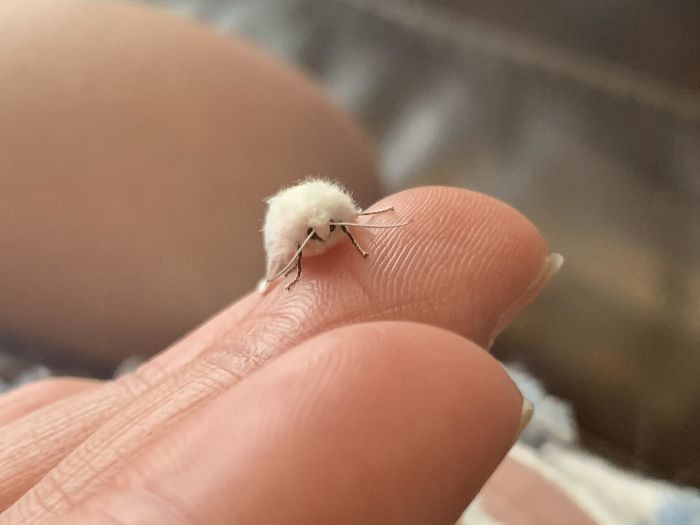
24. "Orphaned Baby Opossum I Am Raising"
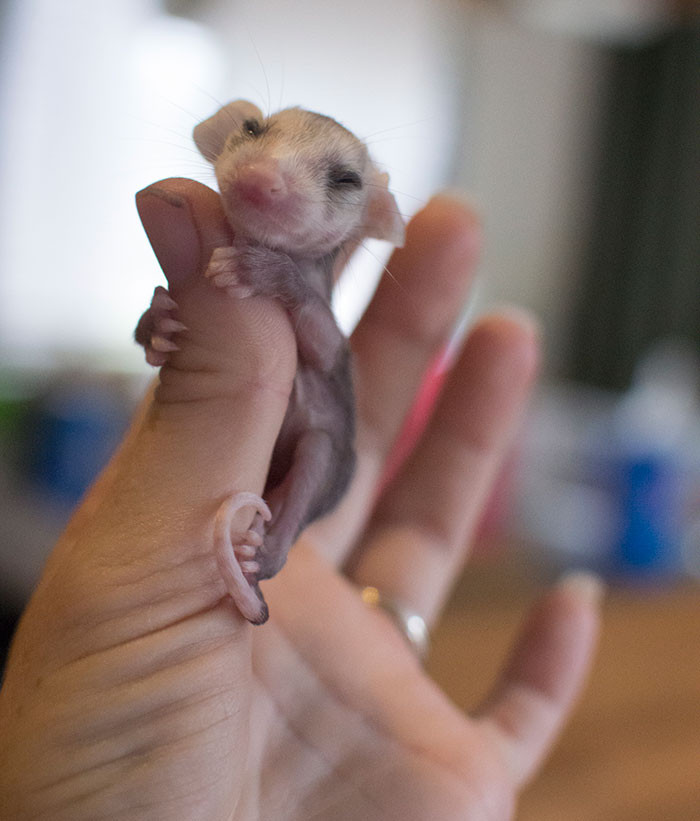
25. "My Friend's New Baby Turtle"
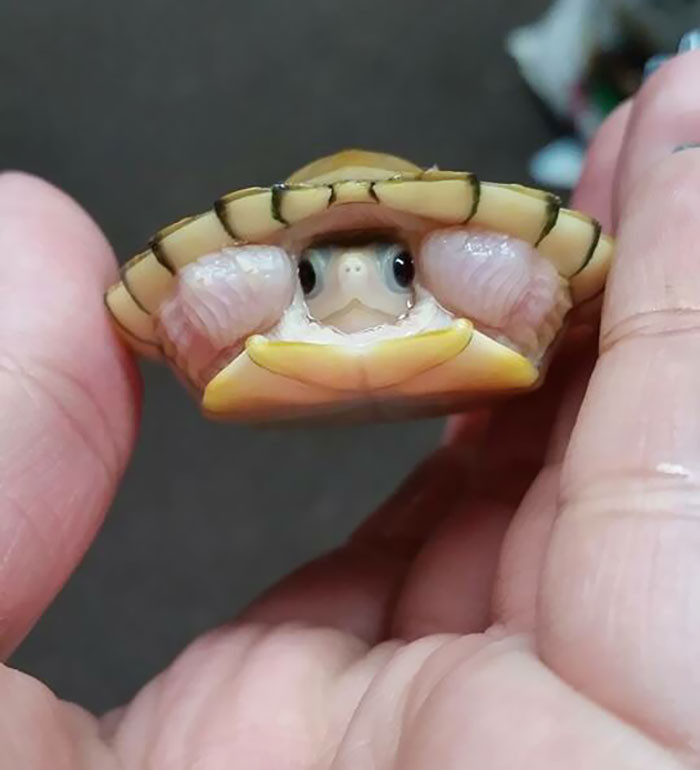
26. "Look What I Found"
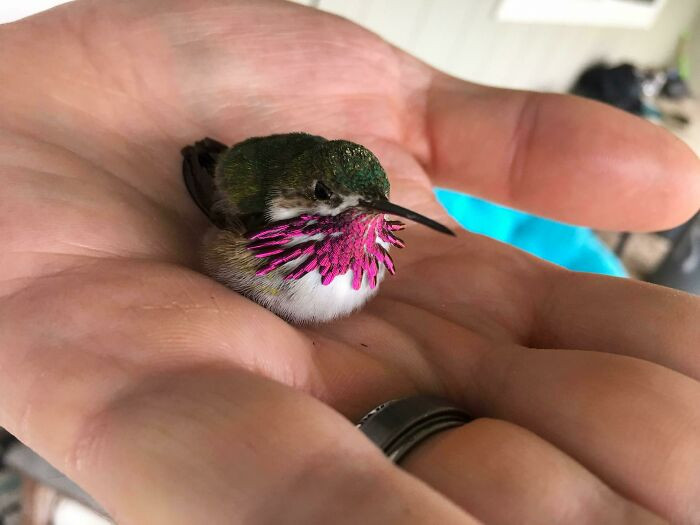
27. "My Lil' Starfish Buddy"
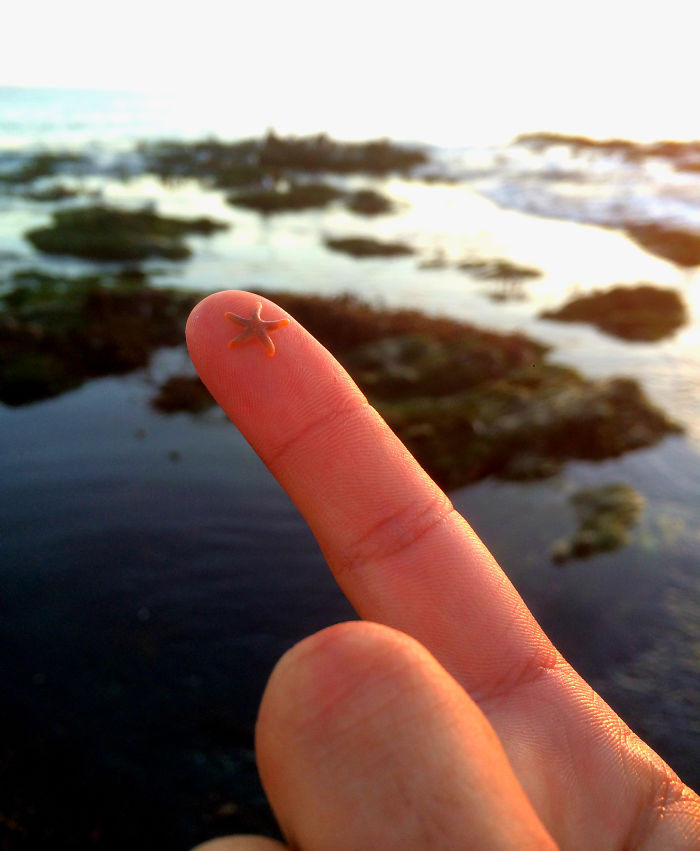
28. "A Western (Australian) Pygmy Possum"
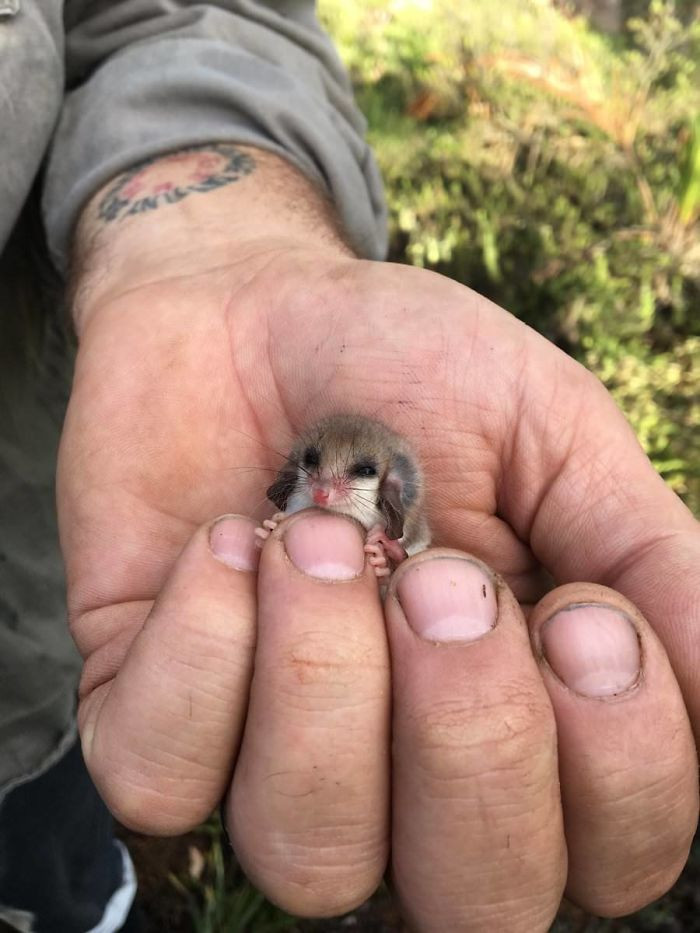
29. "Cute Little Snake"
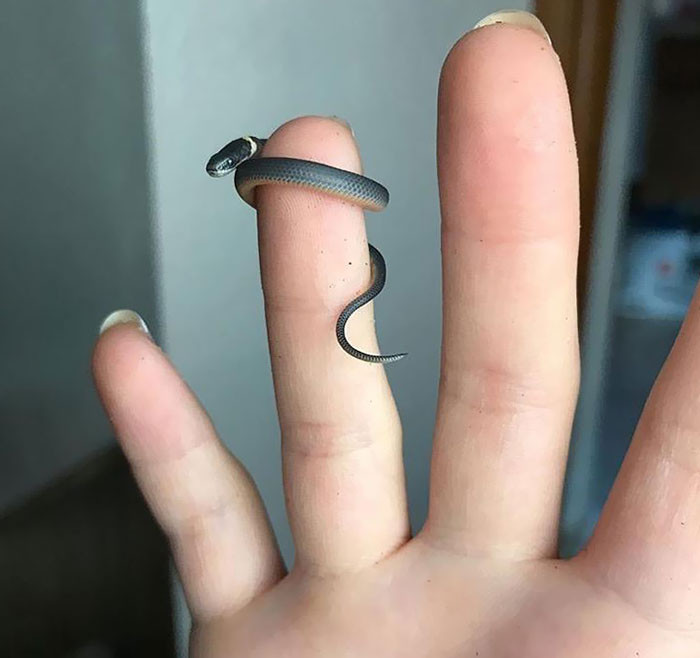
30. Caterpillar
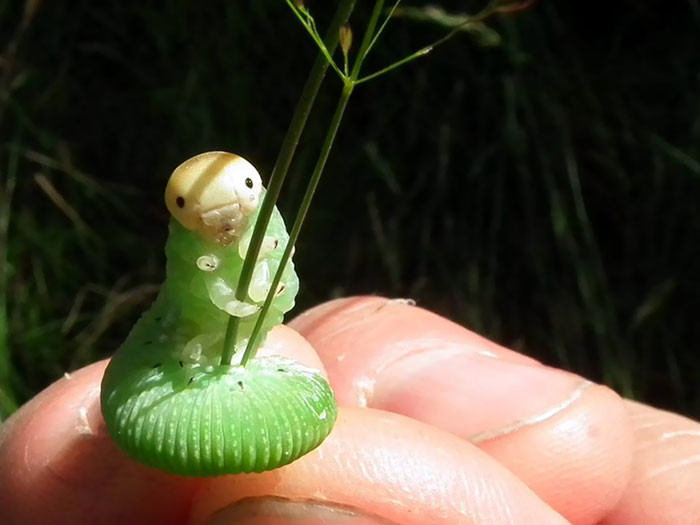
31. "Tiny Baby Shrew I Found Today"
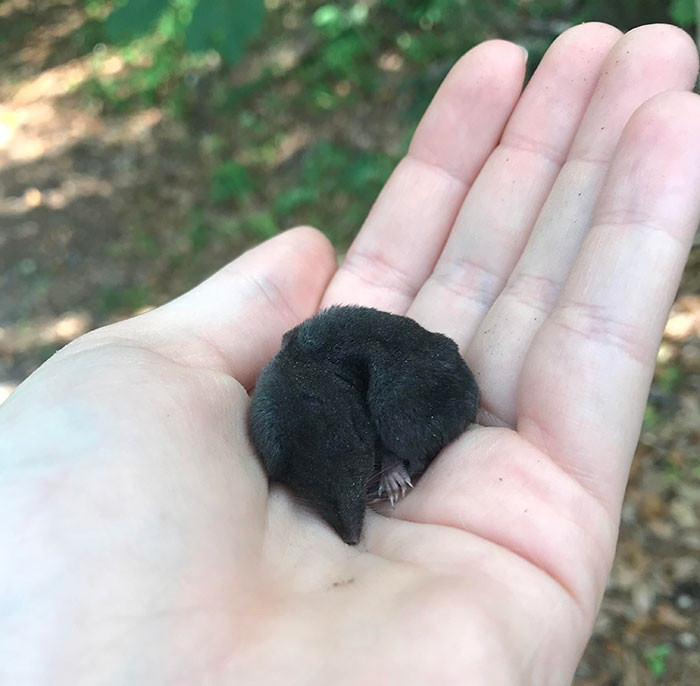
32. "Spotted Turtle And Spotted Frog: Clemmys Guttata And Ranitomeya Vanzolini"
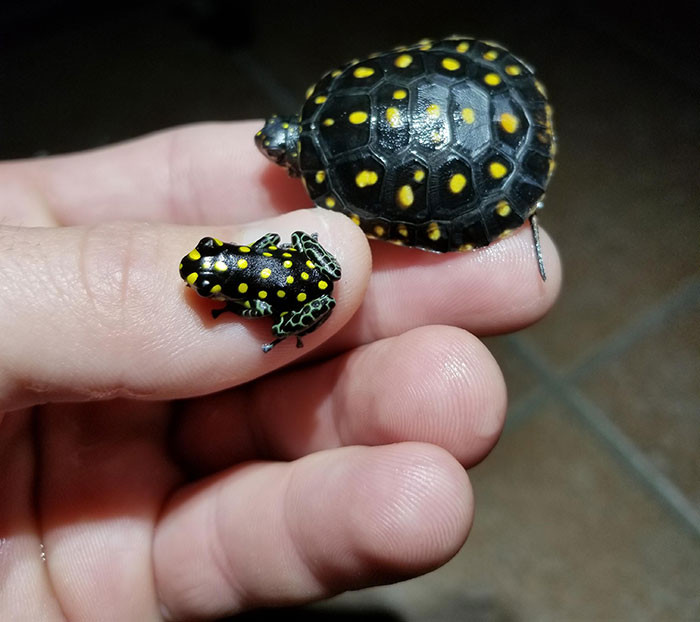
33. "A Very Tiny Baby Harvest Mouse"
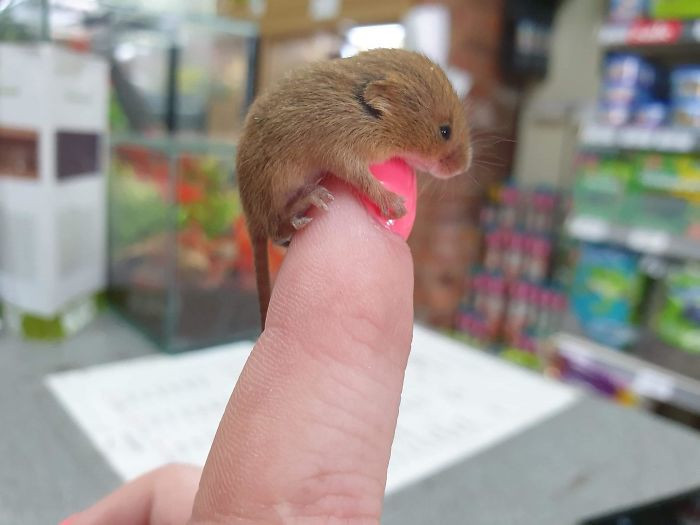
34. Tiny Kraken?
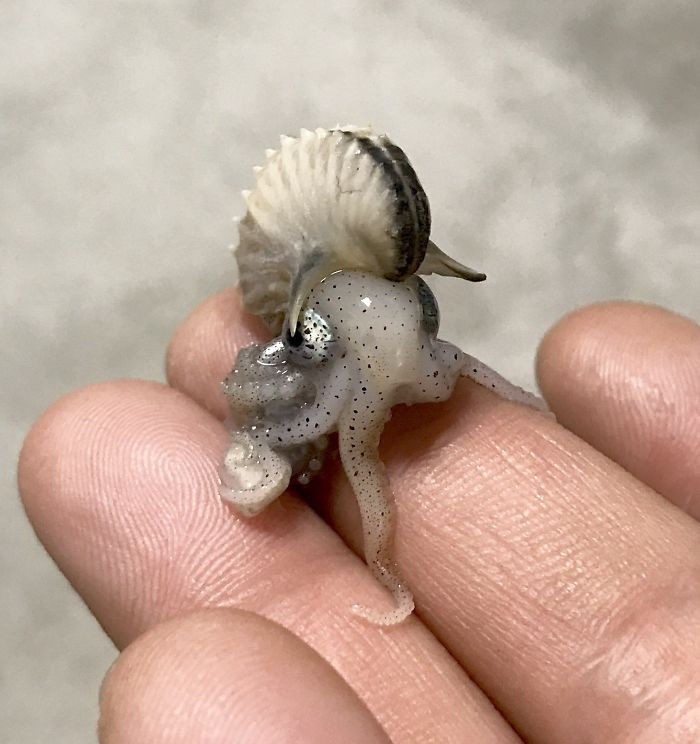
35. Baby Starfish
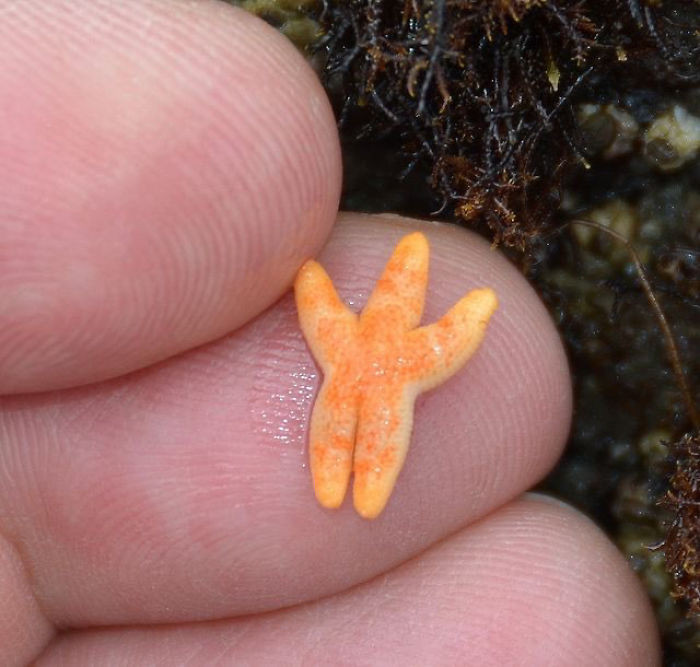
36. "Critically Endangered Baby Lemur Leaf Frog. Being A Wildlife Conservationist Is Tough, But This Little Face Is Why I Do What I Do"
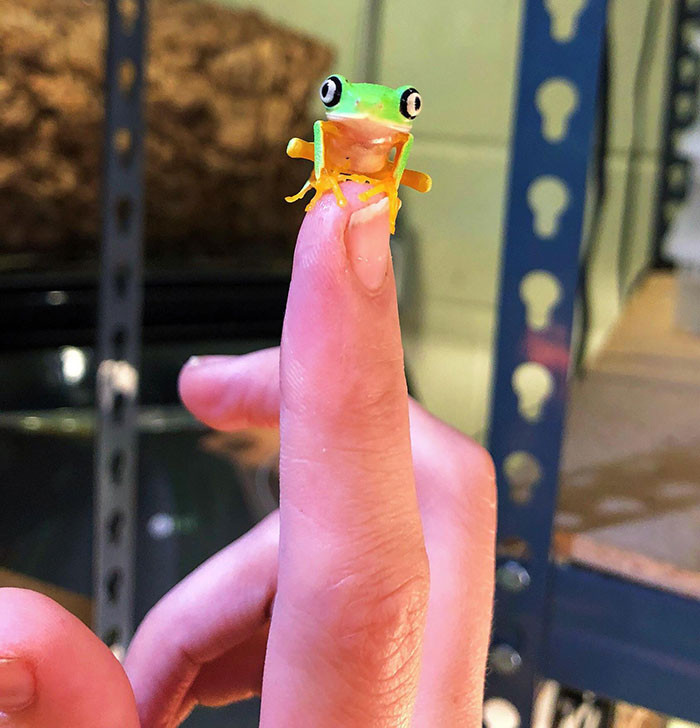
37. Bee
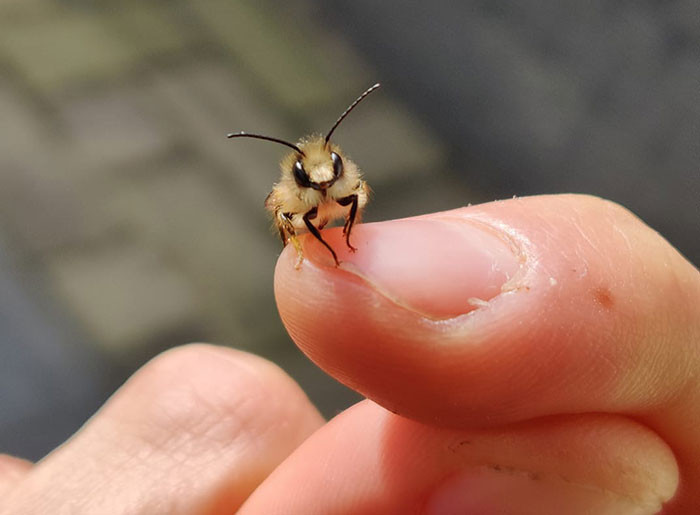
38. Cute Hamster
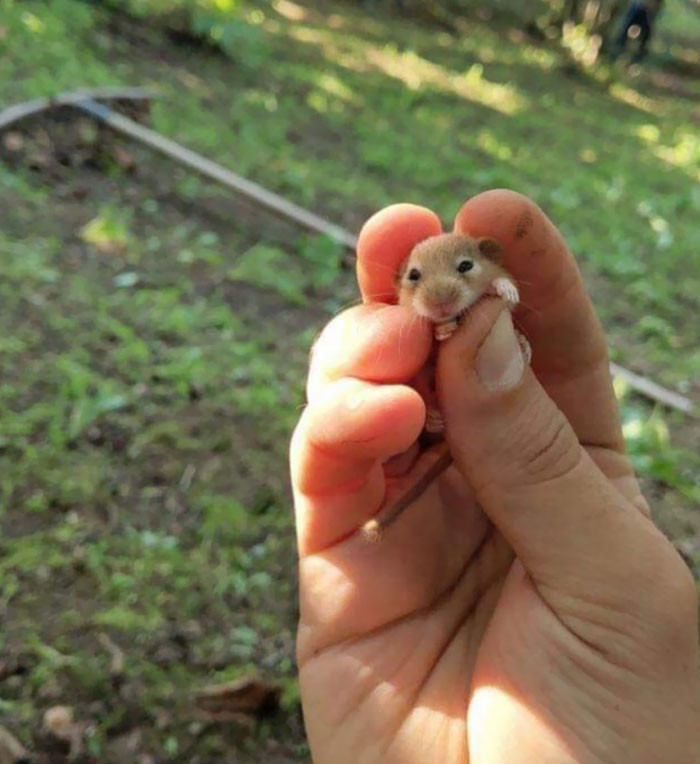
39. "Pinky Finger"
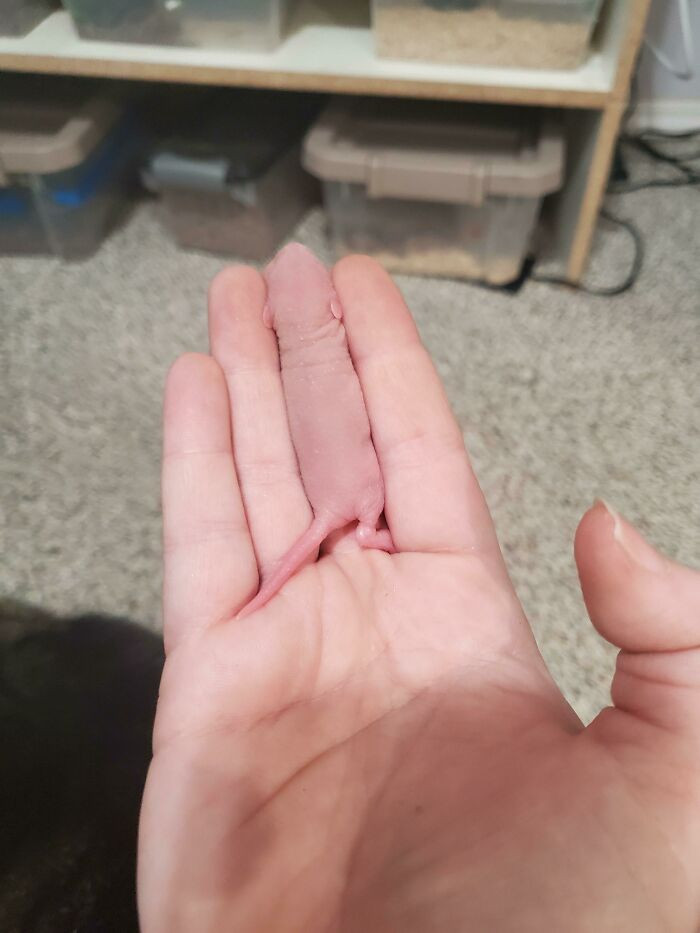
40. "Floyd"
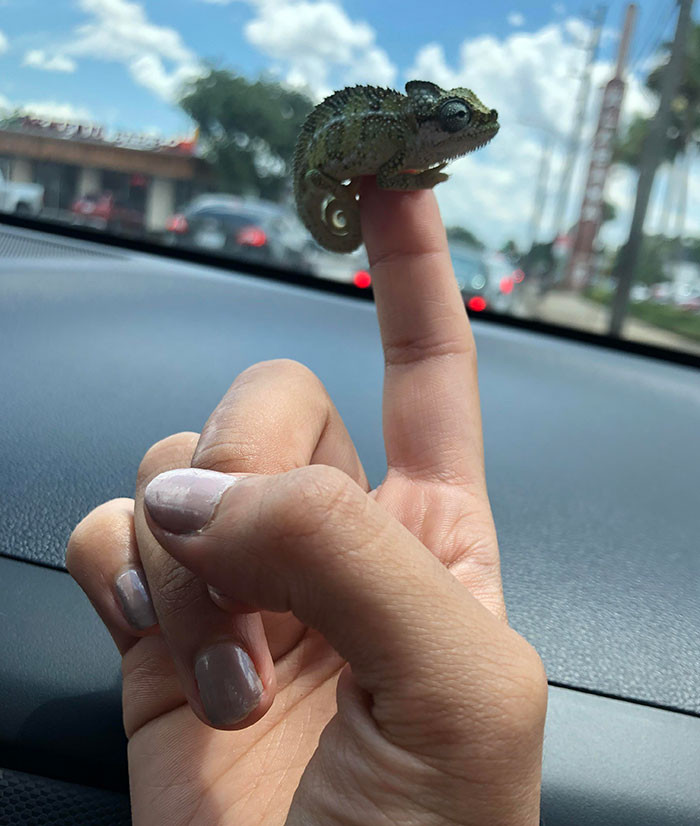
41. "This Very Tiny Frog"
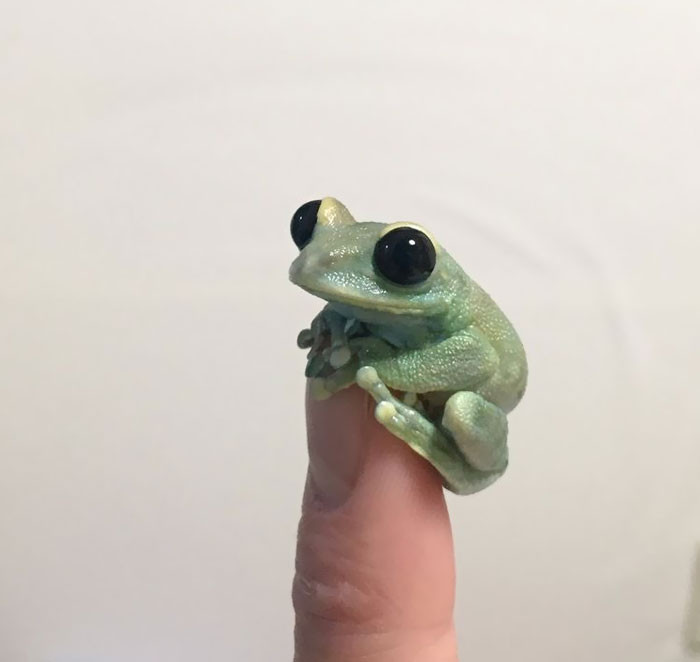
42. "Tiny Baby Hummingbird Drinking Nectar From A Raspberry"
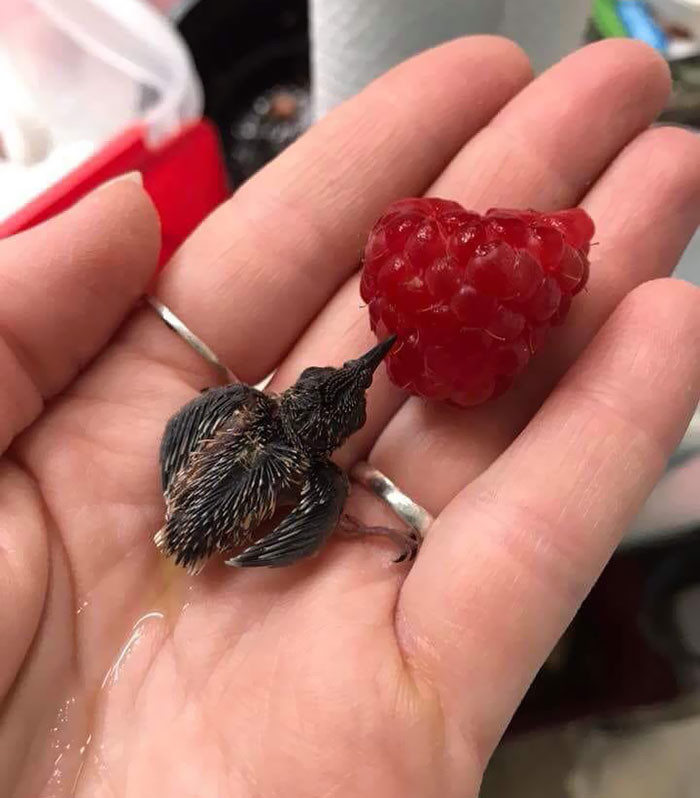
43. "Little Baby Grasshopper Hanging Out"
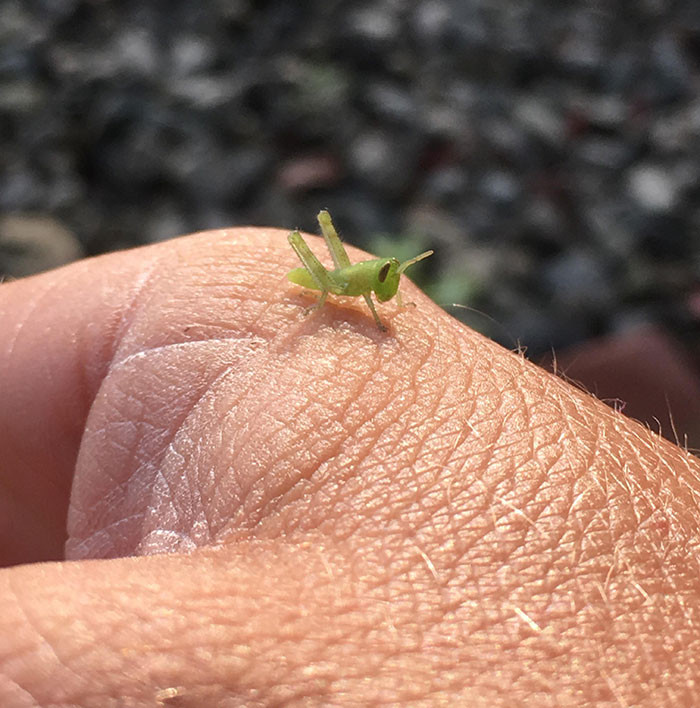
44. Saying Hi
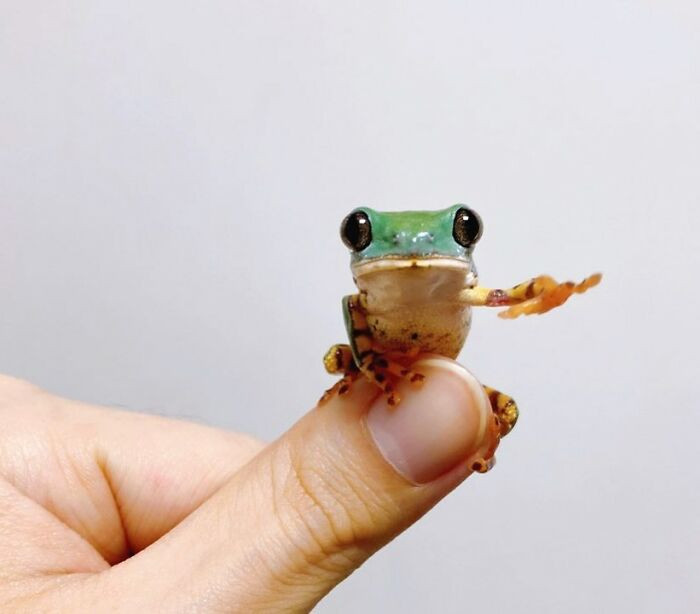
45. "Baby Blue-Tailed Skink I Found Under My Toolbox"
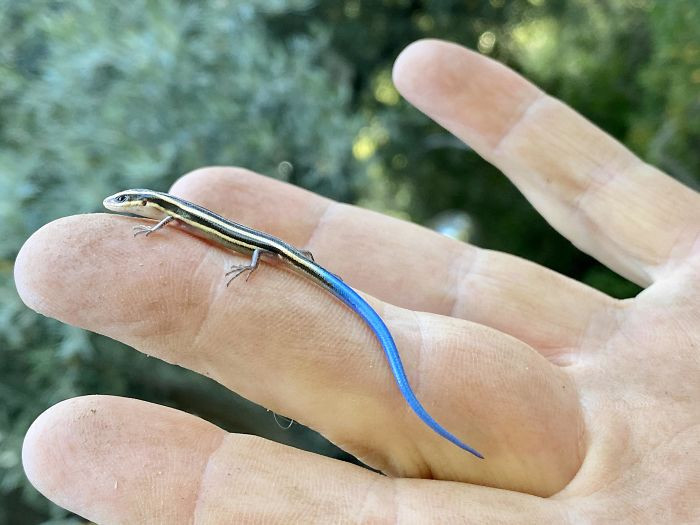
46. So Tiny
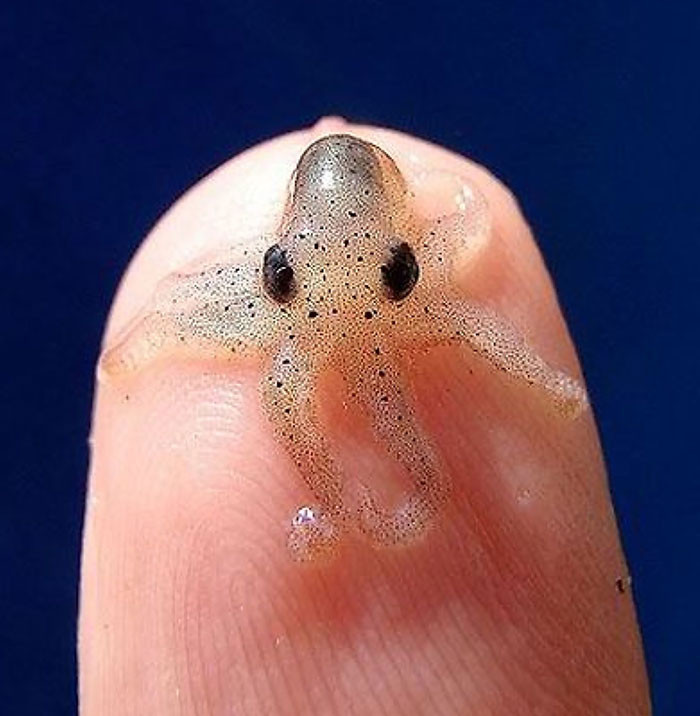
47. "Brave Lil' Grabbies"
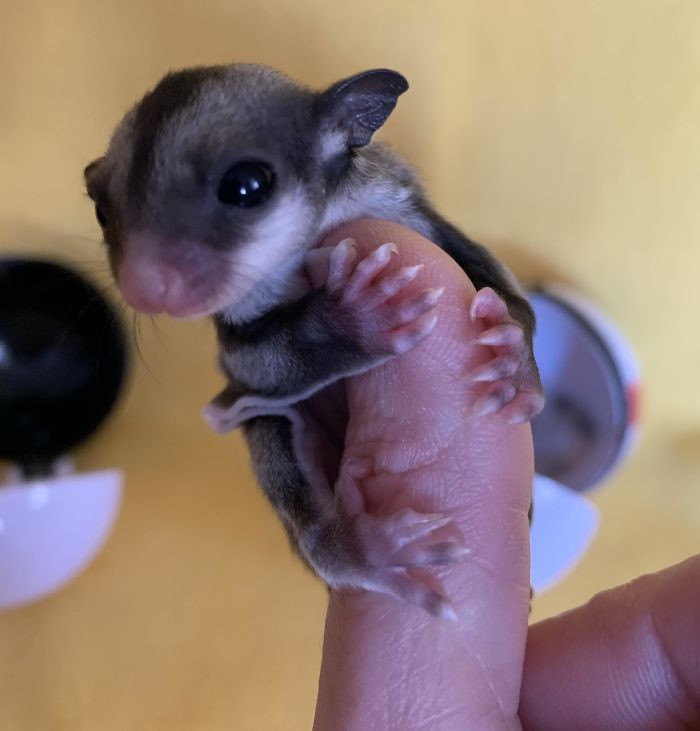
48. "One Smol Dragon"
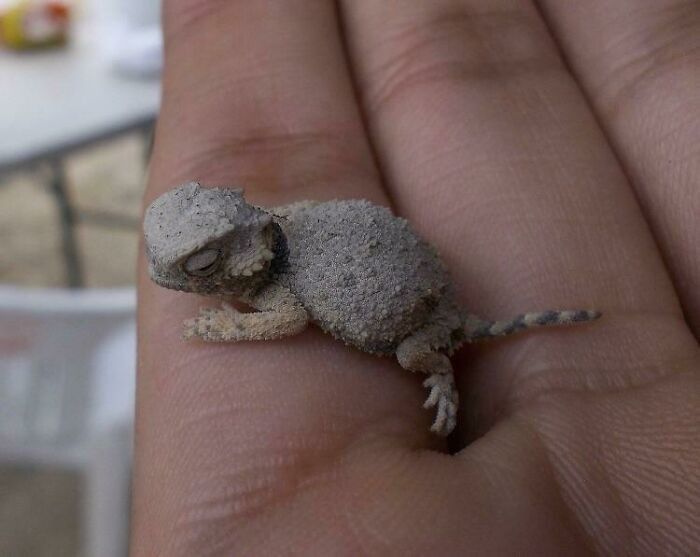
49. "Vietnamese Mossy Frog"
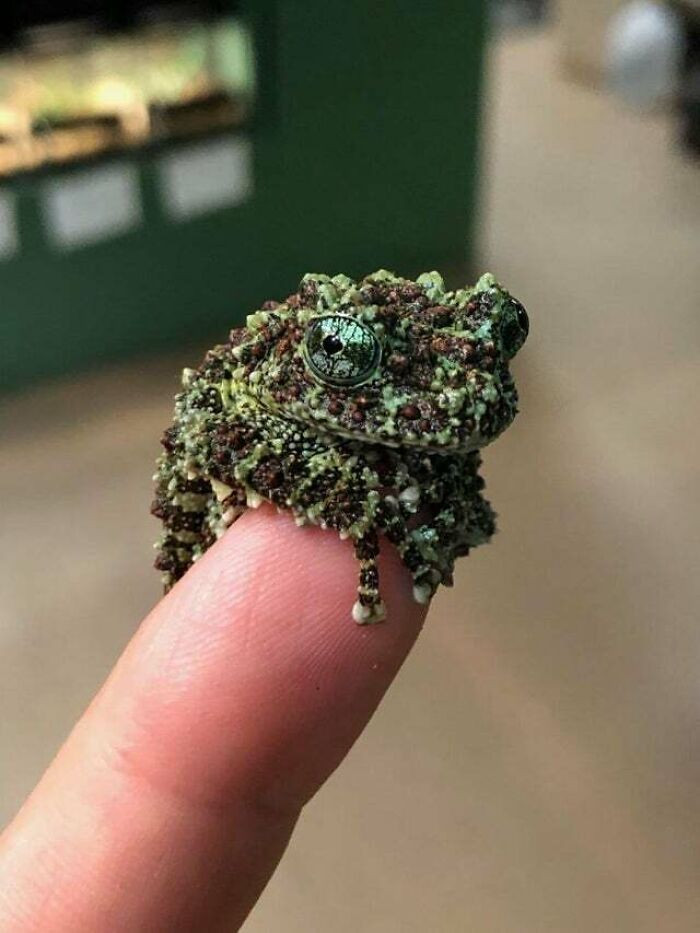
50. "Tiniest Snek Excited For Boops"
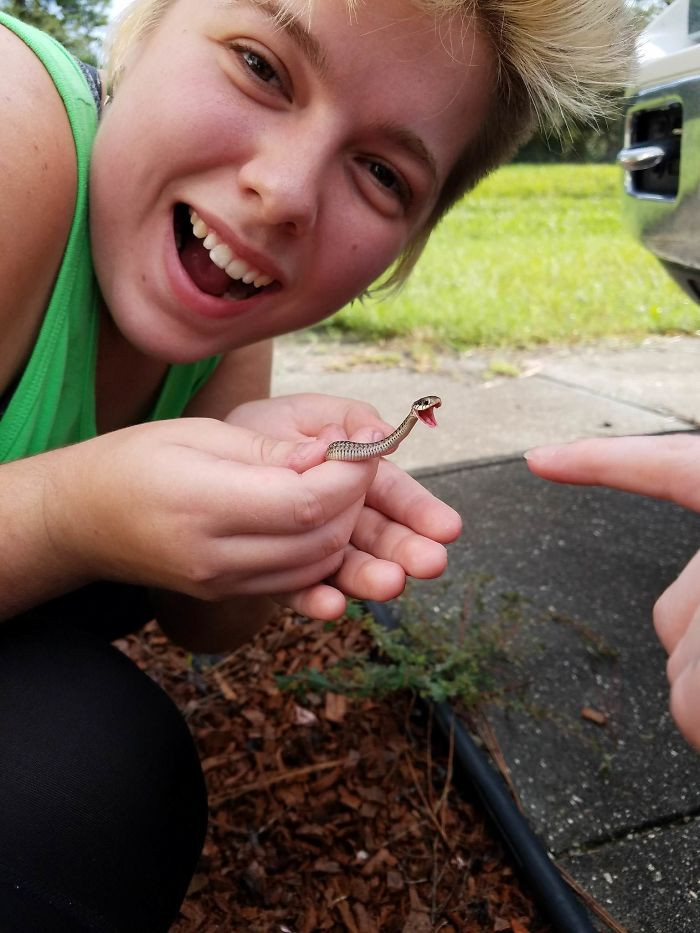
We can all help. According to Dr. Madeline Levine, a renowned child psychologist, "Teaching children to respect and protect wildlife fosters a sense of responsibility and connection to nature." In the UK, you can find wildlife rescues by visiting the RSPCA. For the US, resources are available through Animal Help Now.
So, if we want to see more of these wonderful creatures, we must ensure their natural surroundings are undisturbed and that the animals are protected. If we all do our part, our grandchildren can enjoy these animals too.
Psychological Analysis
This article captures the profound impact animals can have on our mental health. It's important to recognize that the bond between humans and animals can foster emotional resilience and provide comfort during difficult times.
Analysis generated by AI
Analysis & Alternative Approaches
The psychological benefits of interacting with animals are well-documented and can significantly enhance our quality of life. Research consistently supports the idea that pets and cute animals can provide emotional support, reduce stress, and foster happiness. By embracing these interactions, we can improve our mental health and overall well-being.
